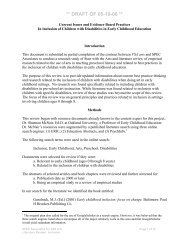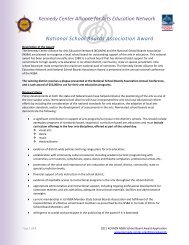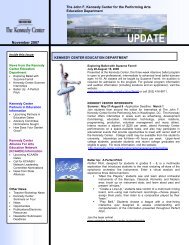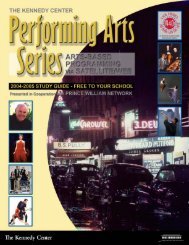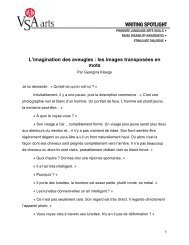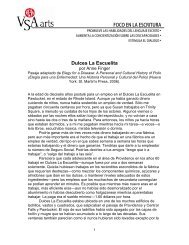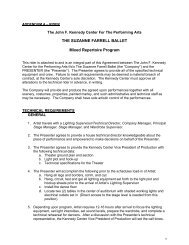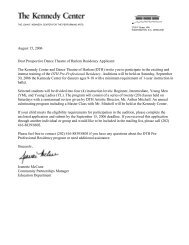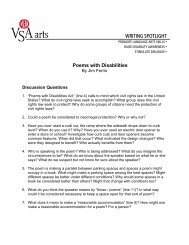Playwright Discovery Award Teacher's Guide - The John F. Kennedy ...
Playwright Discovery Award Teacher's Guide - The John F. Kennedy ...
Playwright Discovery Award Teacher's Guide - The John F. Kennedy ...
Create successful ePaper yourself
Turn your PDF publications into a flip-book with our unique Google optimized e-Paper software.
FOR THE ARTIST’S NOTEBOOK:<br />
Time on Stage<br />
When writing for the stage, it’s important<br />
to indulge the imagination.<br />
However, a stage production presents<br />
challenges that film and television do not.<br />
In film and television, it’s possible to present<br />
a Thanksgiving table with turkey and all the<br />
trimmings, and two seconds later reveal a<br />
Fourth of July picnic and a porch decorated<br />
with red, white, and blue streamers. Although it<br />
is possible to do this onstage, it requires great<br />
thought, an efficient stage crew, and a bit more<br />
than two seconds to execute the set change. If<br />
such a quick change is necessary for your play,<br />
you have to have it; however, the dramaturg<br />
and director can work with the writer to explore<br />
whether such a change is dramatically necessary<br />
and how to adjust the action so that the<br />
set change isn’t distracting.<br />
Using the character’s dialogue—rather than<br />
stage directions—to tell us how time passes<br />
helps create a seamless flow of action within<br />
the play. This choice also allows the set designer<br />
and director to use more imagination<br />
when designing the show’s look. Rather than<br />
rely on numerous realistic touches as a set<br />
decorator for film or television must, a stage<br />
designer can use a single, sometimes abstract,<br />
element to convey Thanksgiving, the Fourth of<br />
July, or ten years in the future.<br />
48 ACT III: DRAMATURGY



